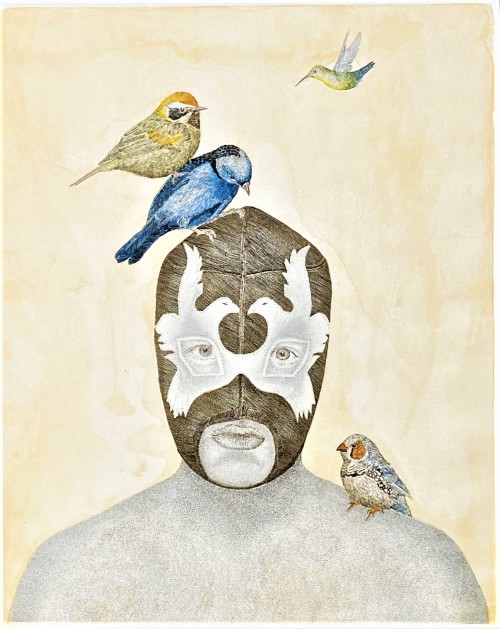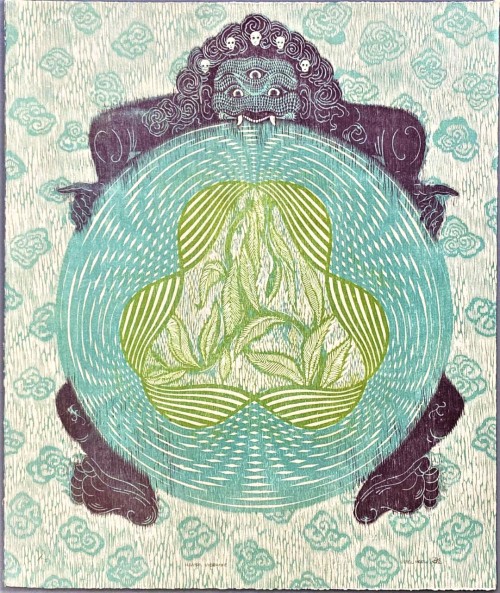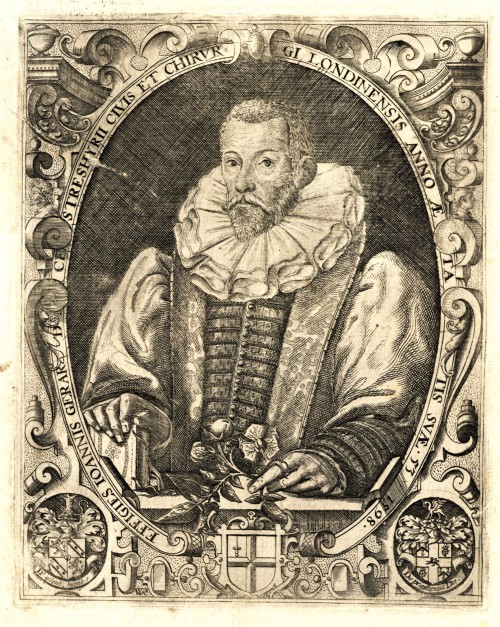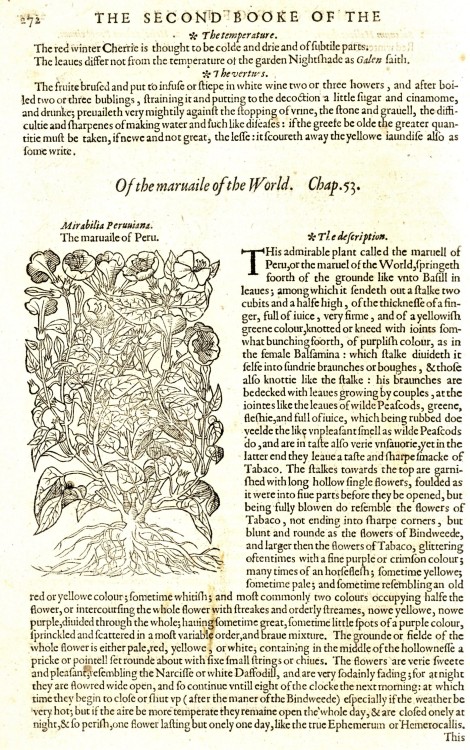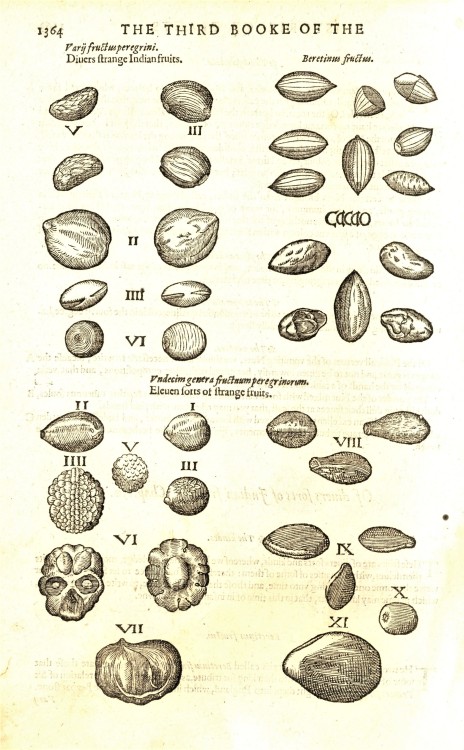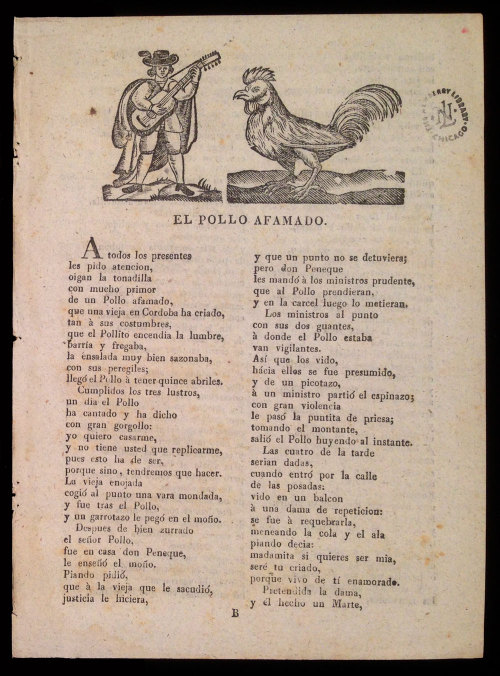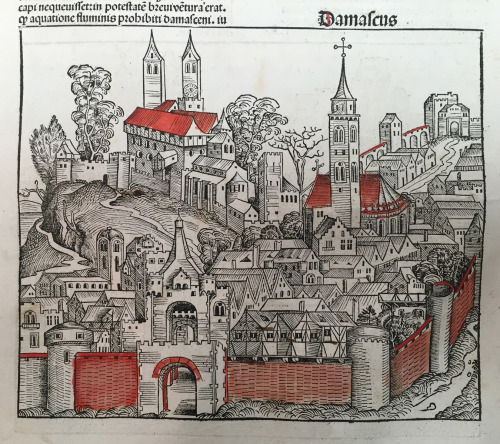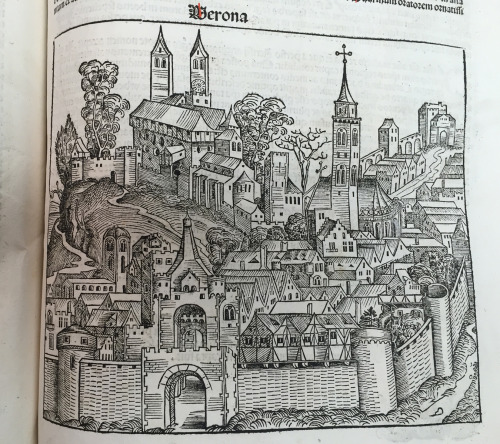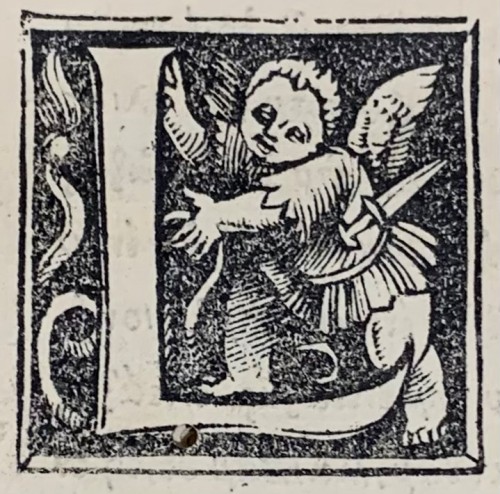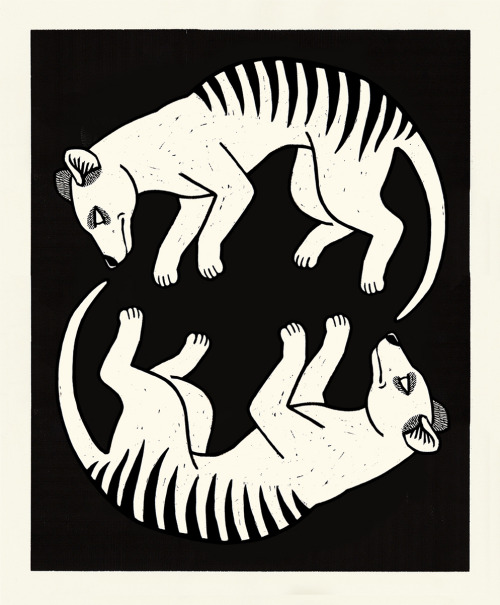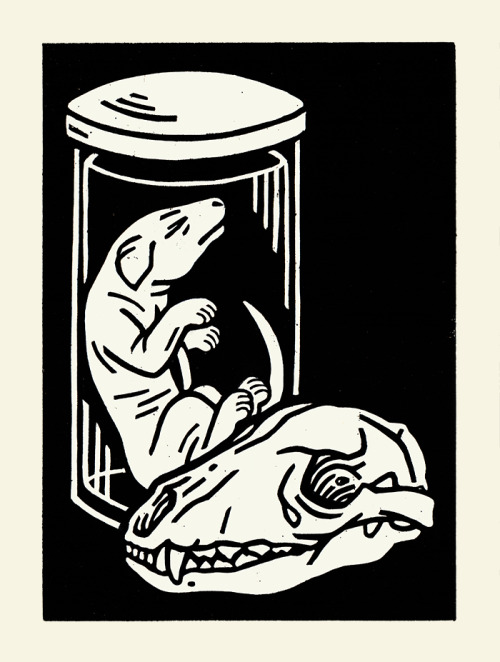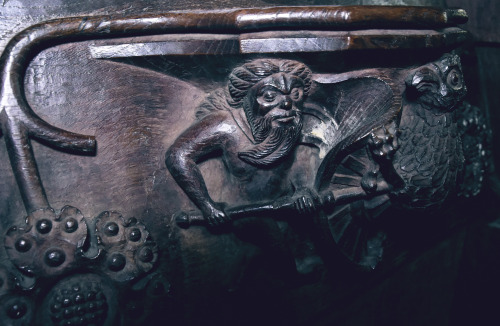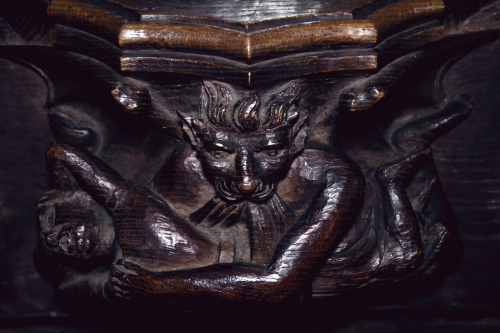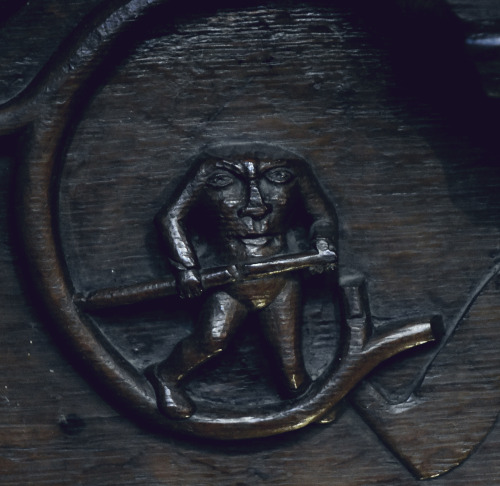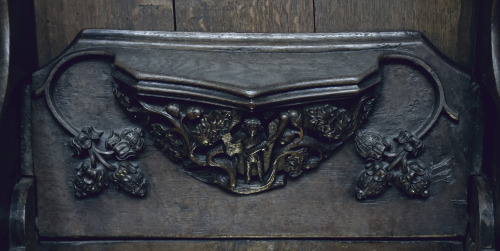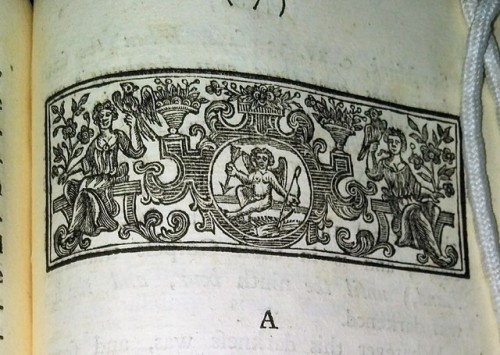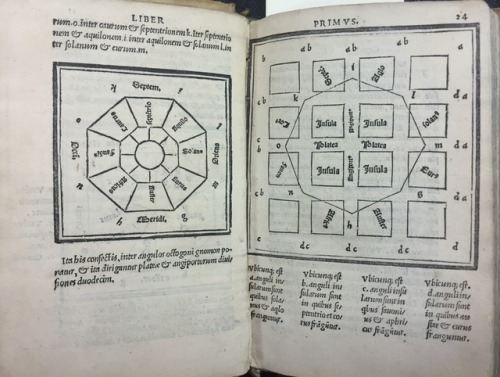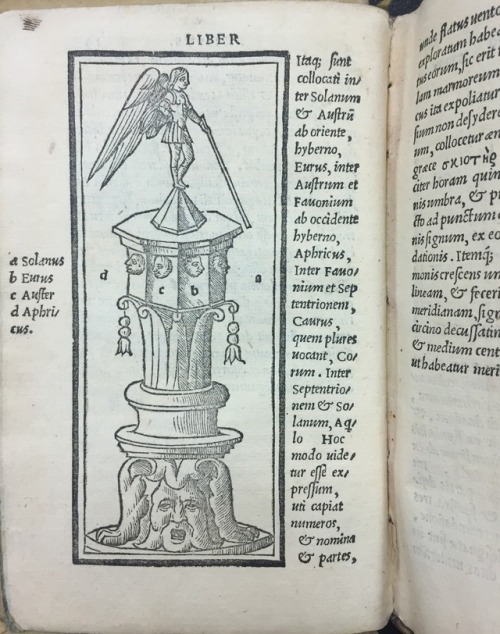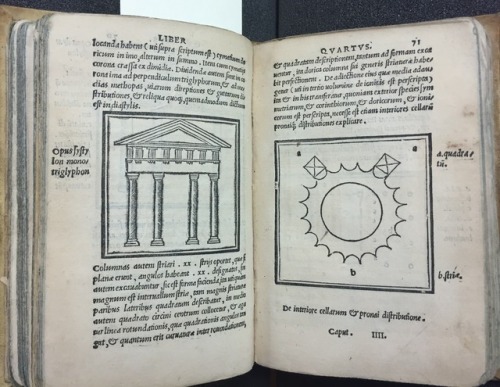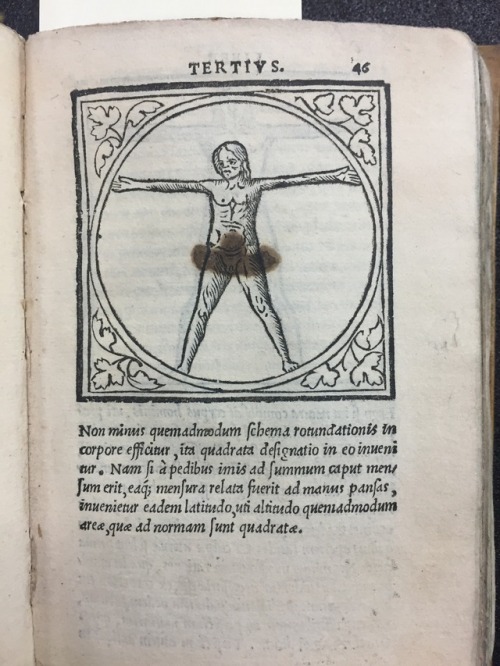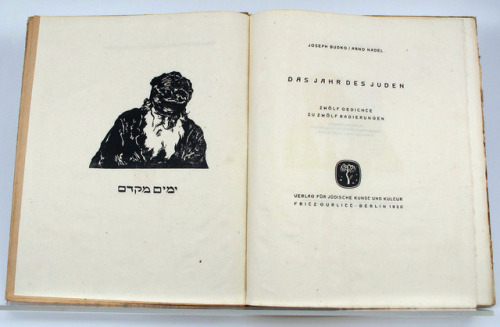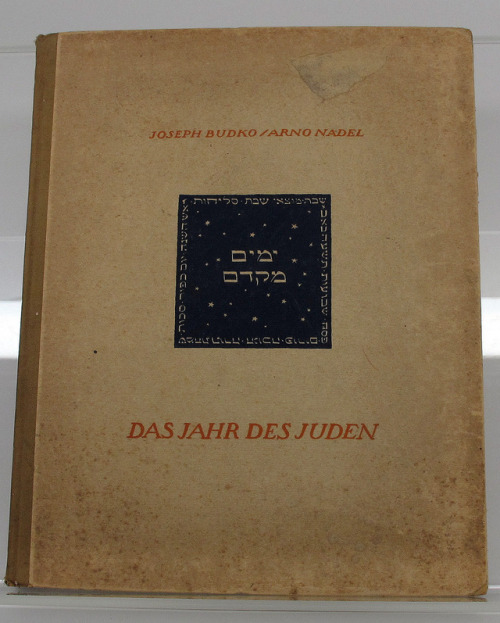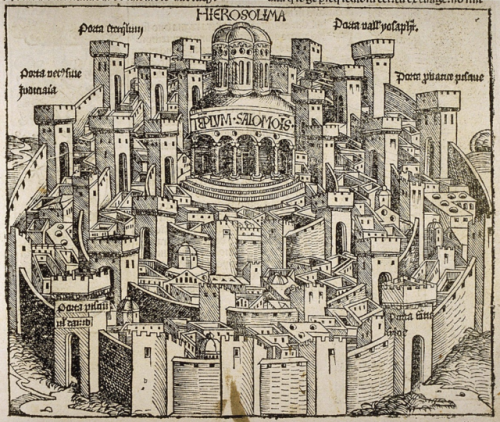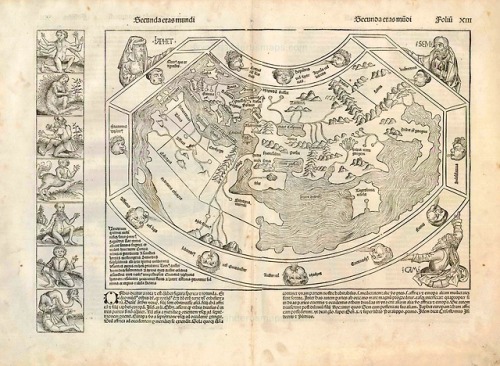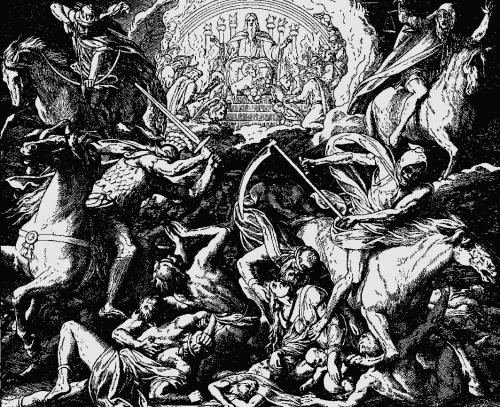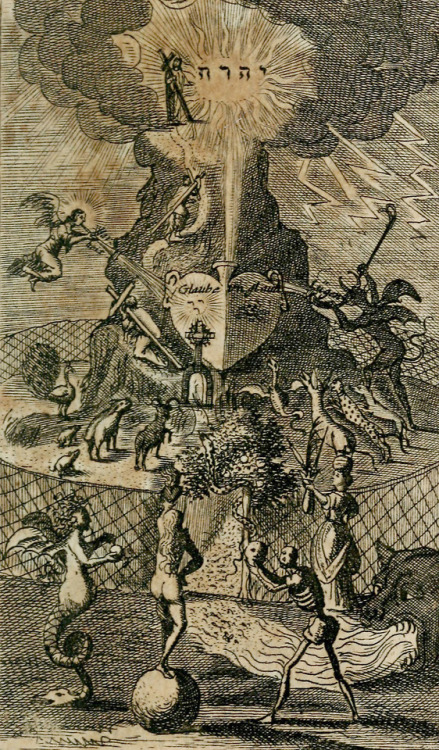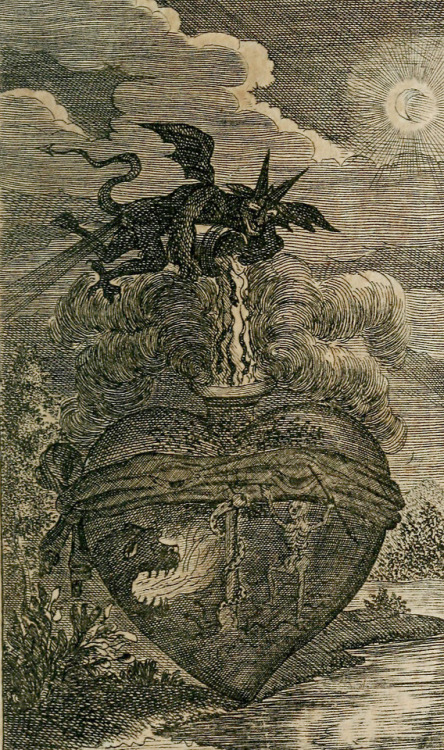#woodcuts
Kasamatsu Shiro “Into the Woods” color woodcut 1955
image description: a colored print of a forest. The ground is entirely covered with orange and yellow leaves, and all the trees are missing their own leaves. In the center there is a puddle, which reflects the sky and the tops of the trees. Rays of light also shine on the center of the image, just above the puddle. end image description.
Post link
Decorative Sunday: La Ceiba Gráfica
In 2013, Per AndersenandMartin Vinaver of the Veracruz, Mexico printmaking workshop La Ceiba Gráfica attended the annual conference of Southern Graphics Council International held in Milwaukee that year. Working with UWM Senior Lecturer in Art & Design Raoul Deal, they mounted an exhibition of large color prints by young artists from the workshop at the Walker’s Point Art Center.
To commemorate their time in Milwaukee, Anderson and Vinaver donated a boxed portfolio of ten prints, Color Grafica Joven Veracruzana, to our Special Collections. Produced in an edition of 35 copies, the ten 60 x 49 cm prints shown here demonstrate a range of printmaking techniques, including lithography, engraving, woodcut, collagraph, and Japanese mokuhanga wood block printing.
Located in Coatepec, Veracruz, the mission of La Ceiba Gráfica is to use art, education, environmentalism, and collective artistic work to create a model of social transformation that generates empowered communities that are aware of their responsibility in caring for their natural environment. The artists represented here are Edgar Cano, Sr. González, , Daniel Berman, Uriel Marín, Sebastían Fund, Rodolfo Sousa, Lucia Prudencio, Abel Zavala, Nicolás Guzmán, and Jimena Ramos.
ViewmoreDecorative Sundayposts.
Post link
Science Saturday: Gerard’s Herball
Among our favorite books in the collection is the 1597 first edition of English herbalist and gardener John Gerard’s The Herball, or, Generall Historie of Plantes, published in London by the Queen’s Printer John Norton. Besides its important place in the popular British understanding of plants, we are also impressed by its folio-sized, 1,484-page heft and its hundreds of delightful woodcut illustrations.
Gerard himself was not a botanical scholar. He was, rather, a high-ranking barber-surgeon, and as such maintained a strong interest in herbalism, supervising significant gardens, and becoming internationally recognized as a dedicated horticultural enthusiast. Despite his lack of scholarship, he is considered one of the founders of botany in the English language, and was among the earliest Renaissance natural historians, relying on empirical evidence rather than ancient authority, following in the line of such botanists as Leonard Fuchs and Gerard’s fellow plant enthusiast Matthias de l'Obel.
Gerard had already gained some notoriety with his earlier 1596 Catalogus arborum, fruticum, ac plantarum, a catalog of 1,039 rare plants he cultivated in his garden at Holborn, and it was the printer John Norton who approached Gerard with the idea of producing an English version of Flemish botanist Rembert Dodoens’s popular herbal, Stirpium historiae pemptades sex published in 1583, which was itself a Latin version of an earlier Flemish work by Dodoens, the Cruydeboeck published in 1554. Earlier work on a popular English-style herbal (Dodoens’s herb book had already been translated into English in 1578) had been attempted by English botanist Robert Priest before he died in 1596 and Gerard has been accused of plagiarizing Priest as well as Gerard’s contemporary l’Obel.
This may or may not be true, but what is true is that only 16 of the approximately 1,800 woodcuts used in the Herball are original. Norton rented the majority of the woodblocks from the Frankfurt woodcutter and printer Nicolaus Bassaeus, which had already been used in several other previously published botanical publications. Despite its derivative nature, Gerard’s Herball remained a popular, standard English reference source for well over a century, with revised and updated editions produced in 1633 and 1636.
Viewother posts that include Gerard’s Herball.
Viewother posts with botanical illustrations.
ViewotherScience Saturday posts.
Post link
Bird is the word.
International Respect for Chickens Day and Bird Day in a single 24-hour period?? Of course. That’s what May 4 is all about.
Take it from this minstrel, who was way ahead of his time. Why don’t we serenade chickens anymore? No respect, that’s why.
Song sheet from a 19th century chapbook. Valencia, Spain.
Newberry call number: Case Wing oversize ZC 9 .186 no. 13
Post link
The Nuremberg Chronicle (1493) is renowned for its fantastic woodcut illustrations.
A total of 1,809 illustrations adorn the book, but only 645 woodblocks were cut. Most of the illustrations are re-used throughout the book - some as many as 11 times!
Above are six instances of the same illustration, as seen in the copy owned by the MSU Libraries. The same image is used to depict the cities of Damascus, Mantua, Perusia, Verona, Serraria, and Sena.
Apparently, the accuracy of the illustration wasn’t very important!
I love the half-hearted attempts at hand-coloring some of these woodcuts. It reminds me of another early book from our collection, the 1532Thurnier Buch.
~Andrew
Post link
Woodcut Wednesday: Watch it with that!
What would this winged fellow need with a knife? We must assume he used it in the construction of the big letter L.
Woodcut initial in the 1516 Greek New Testament by Erasmus.
Erasmus, Desiderius (ed.). Novum instrumentu[m] omne. [Basileae, in aedibus Ioannis Frobenii, 1516]
Post link
Edited versions of my old thylacine woodcuts :)
I got a few messages about the availability of prints and since my Etsy shop is still in a wip state, I added them to my Redbubble profile. (But I wanted them to fit my current style a bit better, that’s why i changed them up a little. I think they look better this way)
Post link
A demon carries off a helpless villager and Woodwose battles a Griffon. Misericords at St Mary & the Angels Faversham- England.
Post link
A collection of mythical creature Misericords including Blemmyes, Woodwose and a Yale- Ripon Cathedral, UK
Post link

Protolume chimico e cheggiante di condupplicati paraphrasi (1682) by Giovanni Francesco Aggravi.
This book is part of our Neville Collection which was purchased from Roy G. Neville. This is a first edition Venetian copy, 12mo. 6 leaves, and woodcut printer’s ornament on the title page. It is bound in contemporary vellum with old ink lettering on spine.
Nothing seems to be known of the author, Giovanni Francesco Aggravi (if you know information that might help, let us know! He’s most likely from the 17th century). The first half of this book covers chemical apparatus, operations, and process, with the second half focusing on an alphabetical list of preparations of chemicals, mainly for pharmaceutical uses.
With #Eclipse2017 still on our minds, we noticed this edition of A Dissertation on the Eclipse Mentioned by Phlegon with its lovely #woodcut text ornaments, including a fine #tailpiece for this #FinisFriday.
Athur Ashley Sykes (1684–1756), A Dissertation on the Eclipse Mentioned by Phlegon, or, An Enquiry Whether that Eclipse had any Relation to the Darkness which Happened at our Saviour’s Passion (London: Printed for James and John Knapton, 1732).
Post link
De architectura by Vitruvius Pollio and Sextus Julius Frontinus,
Florence, 1522.
Marcus Vitruvius Pollio (born c. 80–70 BC, died after c. 15 BC), commonly known as Vitruvius was a Roman author, architect, civil engineer and military engineer during the 1st century BC, known for his multi-volume work entitled De architectura. His discussion of perfect proportion in architecture and the human body led to Da Vinci’s Vitruvian Man.
Question about that last image: Censorship or coincidence?
Post link
Today marks the Jewish festival of Simhat Torah celebrating the completion of the annual cycle of weekly Torah readings in the synagogue.
In this etching by Joseph Budko (1888-1940), which accompanies Nadel’s (1878-1943) poem, “Simchath-Thora”, two men participate in a traditional procession of Torah scrolls.
Spare and elegant, Budko and Nadel’s volume of twelve poems and etchings features a woodcut by Budko on the frontispiece and subtle decorative details including textured paper, deckle page edges, and embossed frames surrounding its tipped-in etchings. Though subtly detailed, the etchings are actually rather small– they measure just 2.5 inches square.
Das Jahr des Juden (Berlin: Verlag für jüdische Kunst und Kultur Fritz Gurlitt, 1920). From the I. Edward Kiev Judaica Collection.
Post link
Introducing Saint Hieronymus, patron saint of librarians! And translators, and encyclopediasts! This woodcut is from one of our two Nuremberg Chronicles, both on exhibition in the special collections until September 29th!
Post link
Currentlyon view in our special collections is the first topographical view of a city in the Liber Cronicarum, this of Jerusalem, along with the page spread on the verso of this leaf which shows the construction of the Tower of Babel. This week only, these two page-spreads from our two Latin editions of the Nuremberg Chronicles; next week, new leaves, new views…
Post link
Our current exhibitionin the special collections–our two copies of the Liber Cronicarum (aka, the Nuremberg Chronicle) of 1493–is presently showing the oldest map in the collection: this view of world. While it’s printed in 1493, it’s based on a much older map by Ptolemy, and it shows Noah’s three sons (Japeth, Shem, and Ham) holding up the world while the classical twelve-winds blow around it all. We’re turning pages in both volumes, so come visit this week to see this glorious woodcut map…
Post link
Four Horsemen and Throne Room~Julius Schnorr von Carolsfeld
Date: 1851-60
Technique: Woodcut
Illustration from Die Bibel in Bildern.
Post link

A specimen of printing types and ornaments from the Baltimore Type Foundry - 1832 - via Internet Archive




